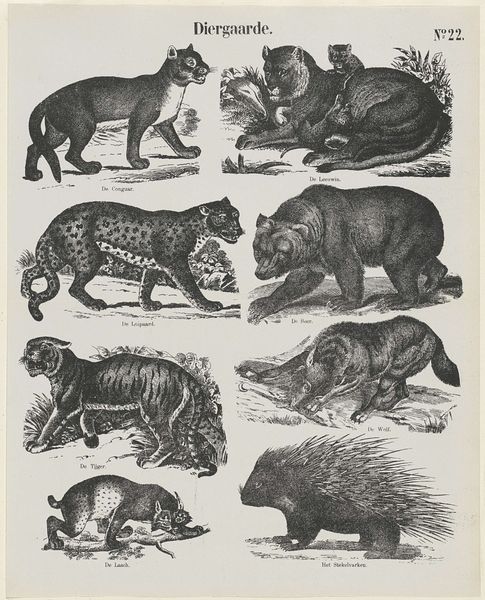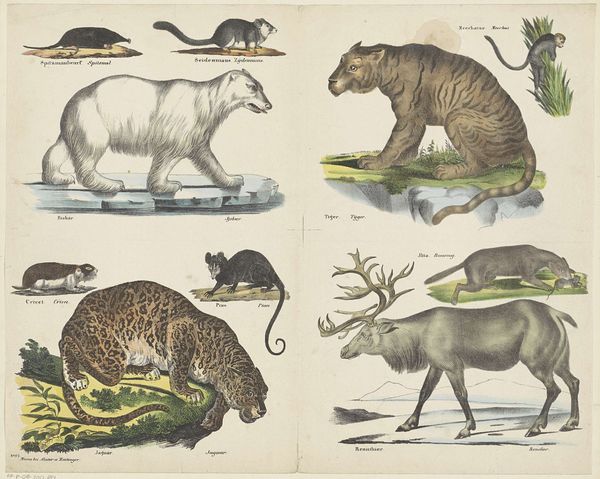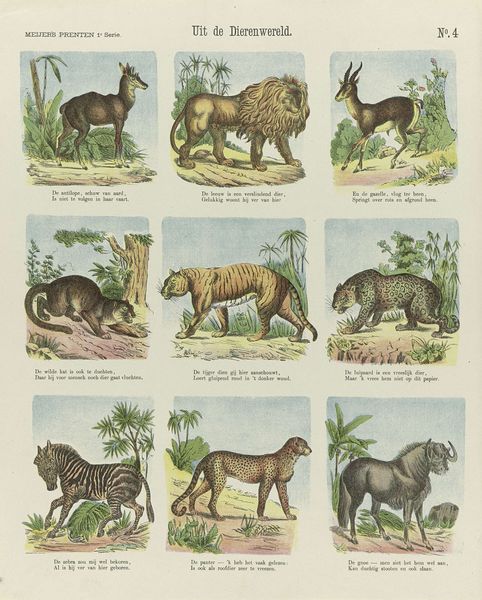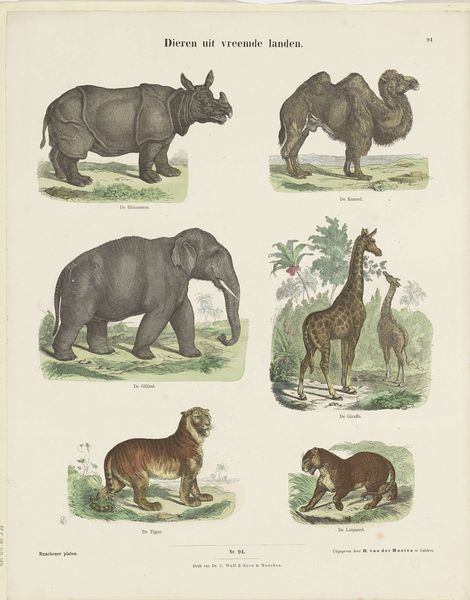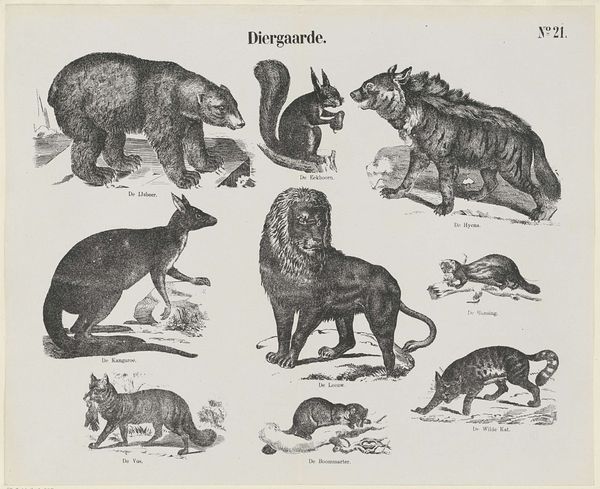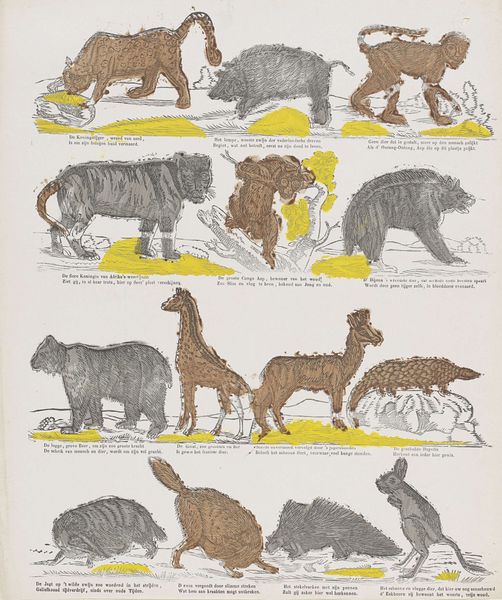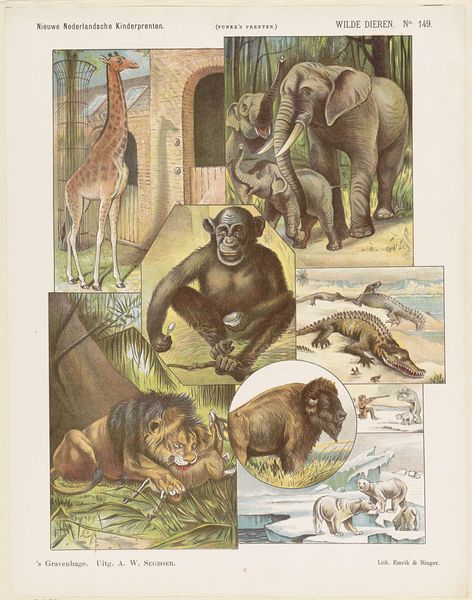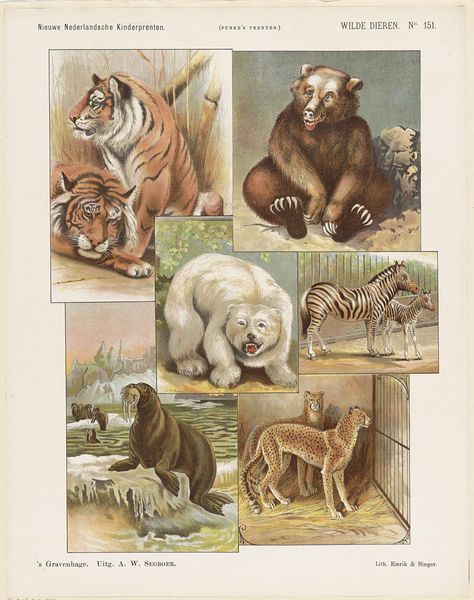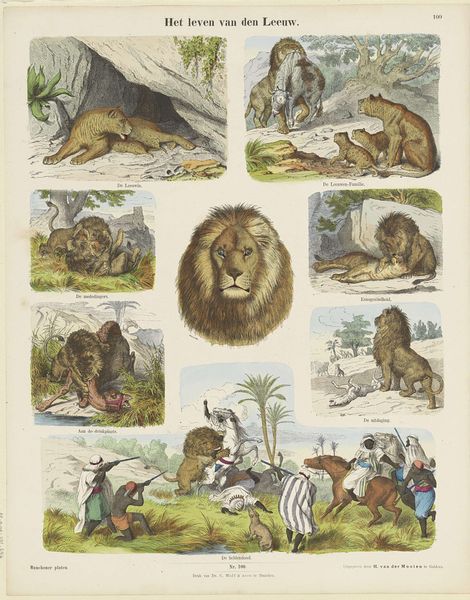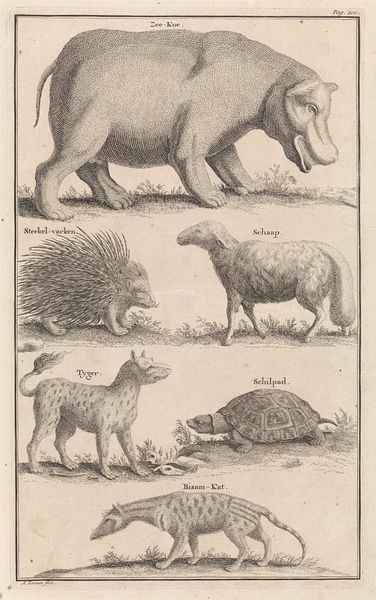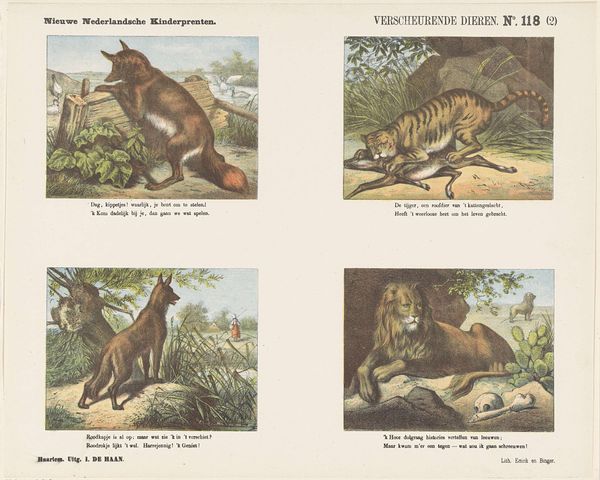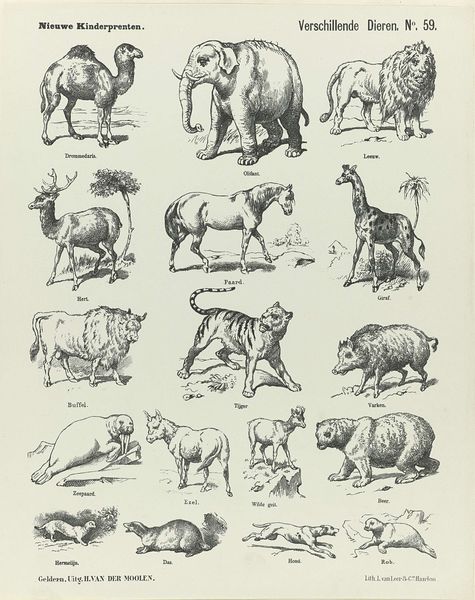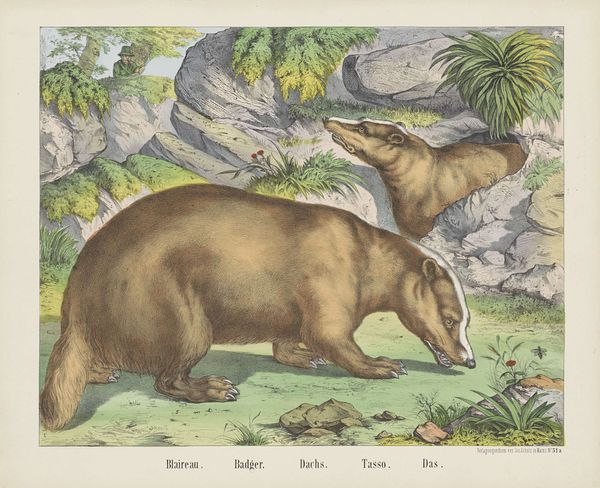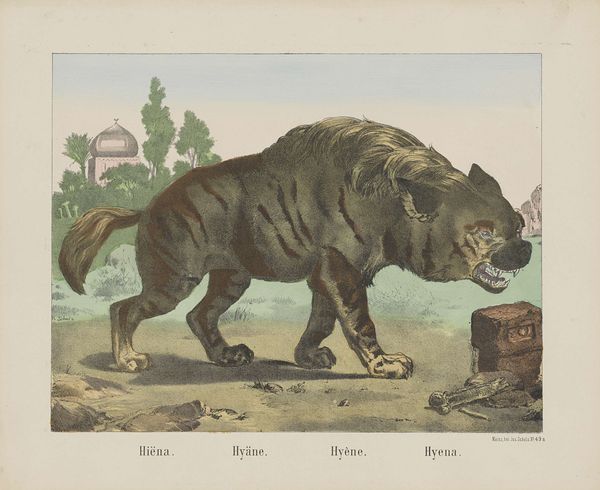
lithograph, print
#
animal
#
lithograph
# print
#
landscape
#
naturalism
#
botanical art
#
realism
Dimensions: height 429 mm, width 344 mm
Copyright: Rijks Museum: Open Domain
Editor: Here we have "Natura artis magistra" from 1873 by De Ruyter & Meijer, a lithograph print depicting several animals in a grid format. There's a compelling contrast between the precision of the animal depictions and the almost quaint presentation. What jumps out to you when you look at it? Curator: What arrests me is the interplay between representation and taxonomy. The grid structure, almost a bestiary, highlights the scientific impulse to classify nature. Note how each animal, despite subtle shading, is rendered with equal attention, denying any subjective hierarchy. Consider also the effect of color in this lithograph; muted tones serve a documentary, rather than aesthetic, purpose. Editor: So, the point isn't necessarily artistic expression, but scientific observation, then? Is it more about documenting these animals than making an artistic statement? Curator: I would say it is about the formal presentation itself. The artist juxtaposes naturalism with a formal grid structure. This raises an intriguing question of artistic intention versus scientific objectivity. Is it art about science, or science presented as art? The limited tonal range reinforces the almost clinical observation. It prompts consideration of how art can both celebrate and dissect the natural world through composition. Editor: That makes me consider the impact of the ordered arrangement. It isn’t just individual pictures; it’s the relationship *between* them that gives it meaning. Curator: Precisely. How does the very act of ordering impact the perceived ‘naturalness’ of each image? Editor: It is an insightful paradox, showcasing both the beauty and analytical perspective of nature through art. Thanks for clarifying that, the rigid grid made more sense.
Comments
No comments
Be the first to comment and join the conversation on the ultimate creative platform.
